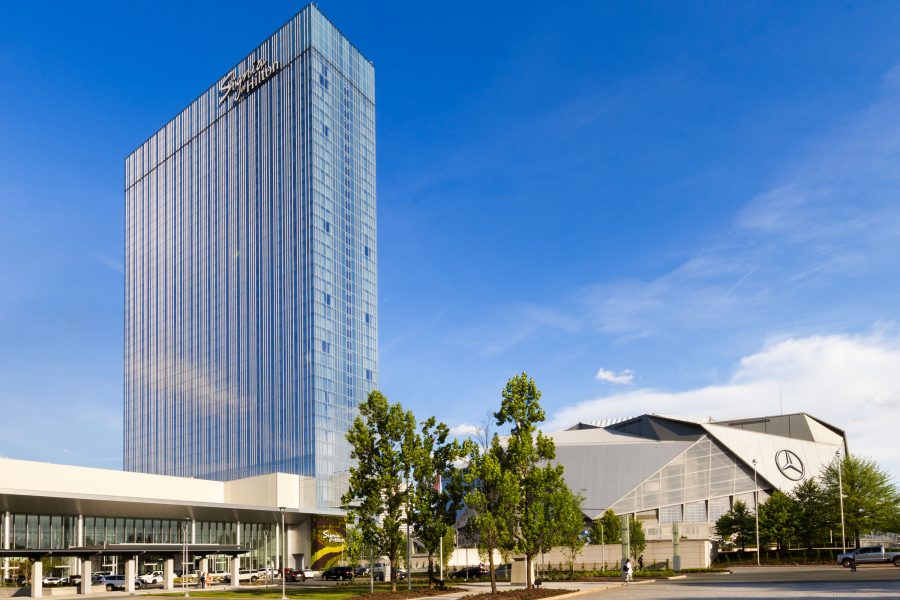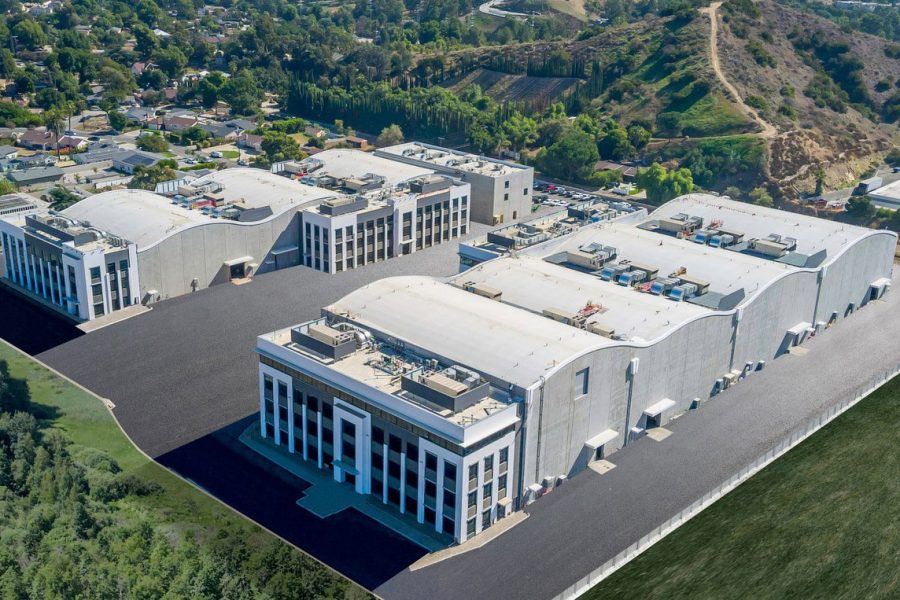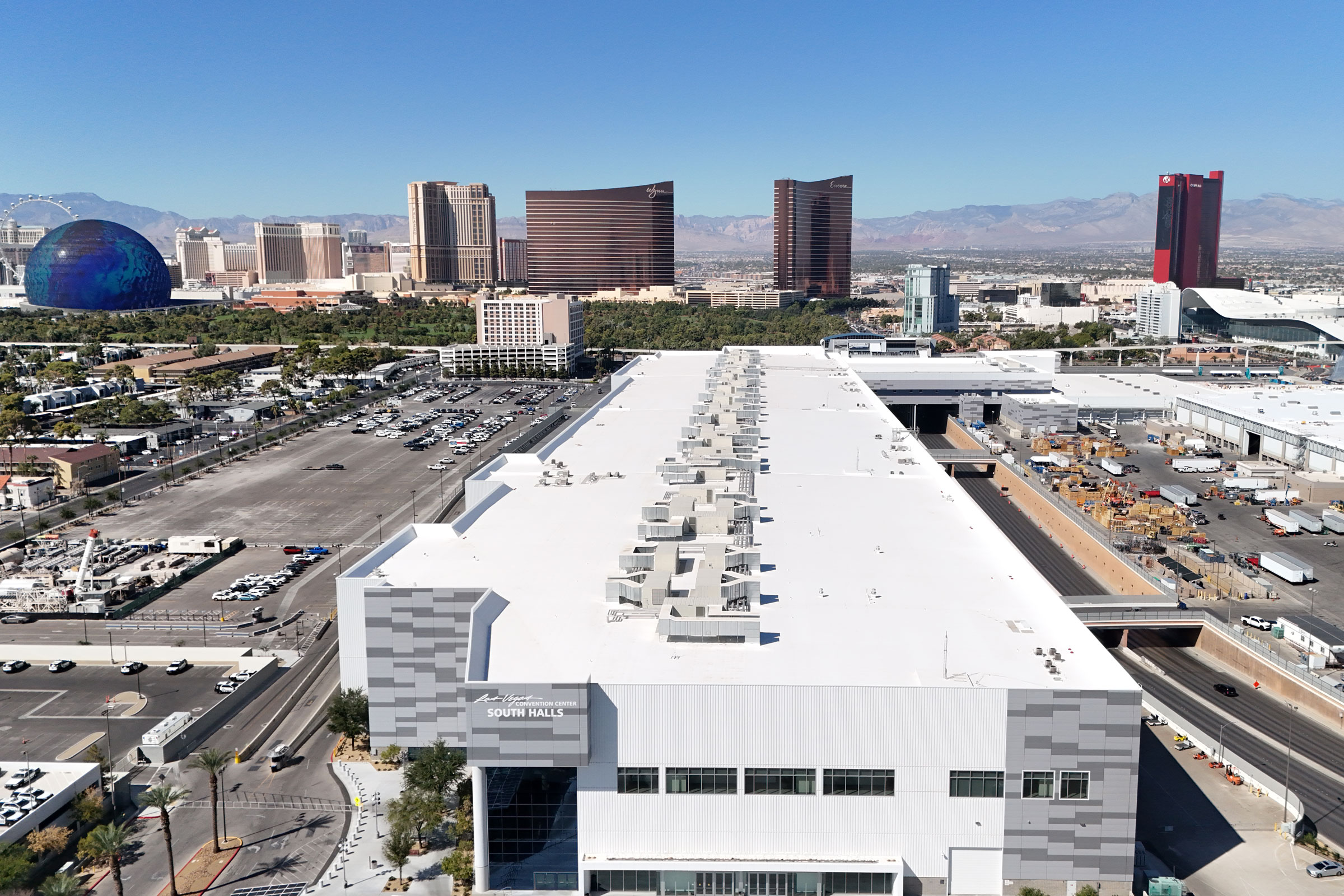Story at a glance:
- Companies like Skanska and Sika are driving industry-wide change by prioritizing life cycle considerations, low-carbon construction, and recycling initiatives to lessen the environmental impact of roofing.
- PVC roofing offers a durable, long-lasting solution for sustainable and resilient building design, with some membranes verified to last more than 35 years, reducing material extraction and waste.
With the building and construction industry responsible for nearly half of annual global carbon emissions, making sustainable choices in the built environment can have a big impact on reducing global warming. We know buildings contribute to carbon emissions in two major ways: the embodied carbon of the raw materials used in putting together and taking down buildings, and the operational carbon needed to power buildings. When it comes to lowering the carbon footprint of buildings, we must look at both sides of this equation, acknowledging that “sustainable” is a complex term—one that often involves tradeoffs and making informed choices.
We also know that when it comes to building materials, the sum of those choices is what adds up to sustainable—and ideally zero-carbon—buildings. While much of the embodied carbon conversation of late has centered on structural materials and how we might shift away from steel and concrete toward a renewable resource like wood, there are many other essential components of buildings that deserve our attention. One such component is the roof—one of the most important, but least discussed, elements of a building.
Out of Sight, Not Out of Mind

Sika and Skanska worked on the award-winning Georgia World Congress Center and Signia by Hilton Hotel, which includes The EnergySmart® Sarnafil® Roof Membrane. Photo by Connie Zhou, courtesy of Skanska
Because design tends to focus on the visible aspects of a building like the facade or the interiors, choices about roofing materials are often an afterthought. However, if a roof fails, the impact can be catastrophic. “The roof is such a critical aspect of the building in terms of how the building operates, and the money that’s spent to protect everything inside it,” says Myrrh Caplan, senior vice president of sustainability at Skanska. “What I advocate for in terms of roofing is quality.”
One of the largest construction and development companies in the US, Skanska is helping drive the industry toward a more sustainable mindset. The company is aiming to reach net-zero carbon emissions in their projects by 2045 and is actively transitioning to low-carbon construction across its portfolio. Having been ISO 14001-certified for nearly three decades, sustainability is embedded in Skanska’s DNA, and the company works closely with partners across the industry to improve access to information that can inform more sustainable material choices, particularly with their EC3 Tool. Co-created by Skanska with industry partners, the free tool indexes more than 100,000 Environmental Product Declarations to help inform decisions around sourcing low-carbon materials, including those used for roofing.
When it comes to creating a more energy-efficient building, you have to do the analysis to determine what is the right product given the clients’ goals or what the building needs to be.
“Where I have been involved in conversations around roofing, the number one topic is green (vegetated) roofs,” Caplan says. “Other conversations are around heat resilience and durability. When it comes to creating a more energy-efficient building, you have to do the analysis to determine what is the right product given the clients’ goals or what the building needs to be.”
Just as with other building materials, Caplan suggests there are a multiplicity of factors that play into decision-making for roofing, including climate, product lifespan and makeup, and budget. “You have to look at balancing out the effects and the opportunities that come with each individual product,” she says.
The Power of PVC

Photo courtesy of Sika
One of the most durable and longest-lasting roofing materials is PVC. Short for “polyvinyl chloride,” PVC is a highly versatile plastic material that has been used for many construction products, including roofing, since the mid-20th century. Manufacturer Sika has been a leader in developing PVC roofing solutions globally for more than 60 years.
“There is a heritage at Sika of producing a really high-quality, long-lasting, durable product,” says William Bellico, vice president of marketing and inside sales for roofing at Sika. As such, Sika is grounded in a vision of sustainability that takes the entire life cycle of a building into account. Today the company is committed to supporting a global transition toward circular, sustainable design, aiming to reduce its company carbon emissions by 90% by 2050.
For Sika, the long service life of PVC makes it a highly desirable roofing solution. “When you’re looking at material impacts, the life cycle of the products should be at the forefront,” Bellico says. “With embodied carbon metrics, one of the current limitations is that typically only a ‘cradle-to-gate’ view is being analyzed, which only looks at the carbon impacts of the initial production of the material. If a product lasts twice as long, that’s less extraction of raw materials and less operational carbon to create replacement materials—and that’s a huge sustainability element in our minds.”
While some roofing technologies have lifespans of 10 to 20 years, several of Sika’s PVC membranes have been third-party verified to last more than 35 years and have published cradle-to-grave EPDs.
When it comes time for replacement, Sika has developed an industry-leading recycling program for their vinyl roof products. Every year Sika not only recycles millions of pounds of pre-consumer production scrap material but also roof membranes at the end of their service, reducing the burden on landfills. “Our primary recycling process is closed loop, taking old roofs back, processing them and working the material back into new roofing products,” Bellico says. “We’ve also been trying to grow the overall volume of recycling that we’re doing.”
Today the company is actively expanding its recycling program, also working with partners in open-loop recycling channels. “The question is—how do we continue to move the needle and lessen the environmental impact of roofing?” Bellico asks.
Creating Your Own Report Card

Sika’s first post-consumer recycling project, the Marriott Long Wharf in Boston, was completed in 2005. Photo courtesy of Sika
As with any building material selection, it’s important to weigh the various attributes of products within a material category. When it comes to roofing sustainability, it’s important to look at the real-world performance of the material (versus warranty offered), third-party certifications on performance and/or sustainability claims, recycling, carbon offsetting with “cool roof” colors, fire resistant performance, and Cradle-to-Grave EPDs. All these attributes correlate directly to the sustainability of a product, Bellico says.
He says the Red List is another interesting consideration, as it’s often a top focus when teams are considering a particular solution—whether products have ingredients listed on various Red Lists. It is important, Bellico says, to look beyond just being listed and understand how that ingredient is used in the product. If used during production but not harmful after the finished product has been created, does it pose an actual notable risk after production, for example, he asks.
“The plastics and PVC industry is one of the heaviest regulated industries in the US,” says Stefan Long, Sika’s sustainability manager for roofing. “This helps ensure that modern PVC is not only manufactured the right way but doesn’t pose a risk to the environment or the public. At the same time Sika is always looking at ways to continue to push the PVC roofing industry to be more and more sustainable.”
Only looking at one attribute to guide material selection may lead a building professional to a product that, on paper, may look like it is more sustainable but doesn’t have the real-world performance history and could fail prematurely. “When you’re thinking about roofing, you have to look at the full spectrum of all the different options and create your own report card for sustainability,” Long says. “You can get advice from manufacturers and see how all the options stack up, but ultimately you have to make up your own mind. Rather than relying on only one sustainability metric, we always recommend taking a multi-attribute assessment approach.”
Looking to the Future

For the roofing membrane at Sunset Glenoaks Studios in California, the project team used Sarnafil G 410 60-mil, Energy Smart Reflective Gray. It was fully adhered using the low-VOC water-based Sarnacol 2121 adhesive. Photo courtesy of Sika
Skanska’s Caplan agrees. “With roofing, if something is durable, resistant to water intrusion and staining and all those things that become future maintenance and cost nightmares, what is the tipping point of how much carbon emissions it’s offsetting by providing a better box?” she asks. “You are choosing your own adventure by weighing the benefits and also the potential future risks.”
Ultimately the conversation around roofing reminds us that considering the full life cycle of a building and each material component is one of the best ways to gauge its sustainability. As we know, the most sustainable solution is often the one that simply uses less: less raw materials, less embodied carbon, and less operational energy.
Skanska’s approach to a new project with the New York City Economic Development Corporation for a Science Park and Research Campus embodies this mindset, as the project involves deconstructing a substantial existing building on site before new construction.
“With this project we’re looking at the life cycle full circle,” Caplan says. “It calls into question: Where does that life cycle of a building end, and where does it start, and could we have a continuation of that life cycle? To me, if we’ve chosen materials well and with circularity in mind, it can live a number of lifetimes. That’s ideal.”

